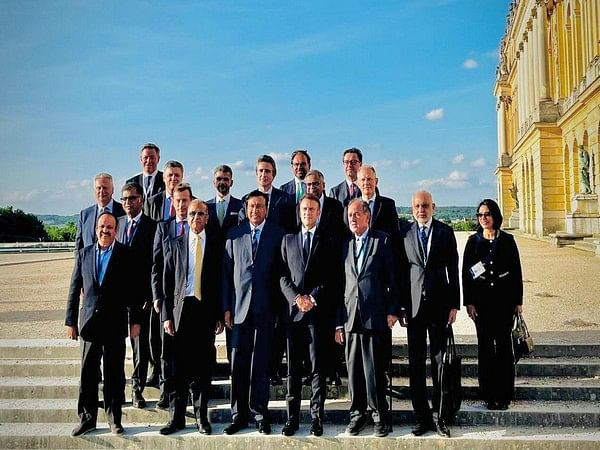While insurance industry’s penetration in India has been relatively low, compared to the western world, the onslaught of Covid-19 has proved to be a boon to the sector.
Despite the economic disruption brought by the pandemic, the demand for insurance has picked up. It has become a necessity, rather than a mere choice, according to recent reports. IANS spoke to Dhirendra Mahyavanshi, Co-Founder & CEO, Turtlemint – an insuretech platform that is empowering insurance advisors with the right digital tools to pitch the apt insurance products to their clients.
Q: India’s insurance penetration was pegged at 4.2 per cent in FY21, according to Swiss Re. With the huge untapped opportunity ahead, what does your business growth trajectory look like 4-5 years from now?
A: Inarguably, insurance is an essential risk mitigation tool that should be prioritised by every individual. While insurance penetration in India is fairly low at 4.2 per cent in absolute terms, it is also low relative to the global average of 7.4 per cent. Clearly, the opportunity to scale up and drive insurance penetration in the country is immense. Correspondingly, Covid has underscored the relevance of having the right risk mitigation tools since it made all of us realise that life and health-related challenges are unpredictable and can have a significant impact on our journeys. We are very optimistic about the demand for insurance in the coming 4-5 years and beyond.
To optimally capture this demand, we believe it is important to ensure that people have access to the right advice and the right insurance policies. We understand that insurance advisors are the most important segment in the insurance market and drive approximately 80 per cent of the sales. Technology, with its ability to reach the grassroots level and make insurance buying a seamless process, has inevitably become an important part of our solution.
Thus, by empowering insurance advisors with the right set of digital tools, we aim to create 1 million financial advisors by 2025 and holistically drive insurance penetration in the country. We have already successfully embarked on this journey and in just five years, we have onboarded approximately 1.4 lakh insurance advisors who are spread across the length and breadth of the country in 14,000+ pin codes.
Correspondingly, we have onboarded approximately 34 lakh customers, sold around 42 lakh policies, and processed claims more than Rs 30 crore. Through our TurtlemintPro app, advisors can access a wide array of digital tools that can help them upskill, digitally onboard clients, and recommend the right policies to the right people.
Q: One of the main reasons why consumers are shifting their insurance buying online is because it offers transparency in plans, removes difficulties in claim filings and promotes education in helping them make better decisions. Please tell us about such specific initiatives at Turtlemint?
A: Consumers today are well-informed and aware of what they want and how they want their products and services to be delivered. They do extensive research before buying any product or service, compare prices and platforms, and then make the purchase decision. This is true for insurance as well. To cater to a more discerning consumer, Turtlemint has established several offerings.
Firstly, Turtlemint has more than 45+ insurance companies and hundreds of products from which consumers can choose.
Secondly, Turtlemint makes an effort to understand the profile of the consumer by asking a few simple questions depending on the insurance product the consumer wants to buy and recommends the suitable product via the policy recommender. There are also features to sort the recommended products based on the premium rates, include add-ons in the products, understand the list of network hospitals who offer cashless hospitalisaton for health insurance and much more.
Thirdly, the insurance advisor can leverage the TurtlemintPro app to make recommendations, seamlessly onboard clients, and engage with the clients via SMS or email. Our advisors and customers can access scores of educational videos and text content to upskill and make more informed insurance decisions respectively. Further, Turtlemint also offers advisors lead management tools and marketing tools to promote themselves and grow their business. Most importantly, Turtlemint offers claim assistance to anyone who needs help irrespective of the policy being bought via Turtlemint or not.
Q: The insurance advisor has a pivotal role to play in the insurance ecosystem. How have you empowered the insurance advisor?
A: Advisors are the most important segment of the insurance ecosystem. They act as a conduit between insurance companies and consumers and are well-positioned to drive insurance penetration in the country. Thus, we understood early on that to achieve universal insurance, we must empower the insurance advisor with the right set of digital and educational tools. Our custom TurtlemintPro app enables advisors to optimally leverage technology and sell multiple insurance products of multiple companies through one single and multi-lingual application. Further, we have digitised the entire process of training, licensing, and verification, thereby enabling advisors to onboard customers in an efficient manner.
AREAS OF VALUE ADDITION INCLUDE Help advisors share customised recommendations with their clients by taking into consideration their nuanced requirements. Built a comprehensive online skill development program for insurance advisors. The programme offers more than 70+ courses ranging from insurance advisor certification to personality development courses, sales skills, podcasts, etc. Support the advisor in business growth by providing access to a complete suite of products and information required to become a great insurance advisor. The TurtlemintPro app also provides relevant analytics and information on lead management and shares marketing tools like brochures, posters, own profile, etc.
Q: What did cloud technology enable you to do that you couldn’t do before?
A: AWS has been powering all our technology-related activities. It is both efficient and agile and allows us to seamlessly integrate all our technology solutions and activities. As a firm, we are witnessing exponential expansion and AWS has holistically been able to meet our growing demands.


 Opinion2 years ago
Opinion2 years ago
 Fashion7 years ago
Fashion7 years ago
 Entertainment7 years ago
Entertainment7 years ago
 Entertainment7 years ago
Entertainment7 years ago
 Opinion2 years ago
Opinion2 years ago
 Business News2 years ago
Business News2 years ago
 Policy&Politics2 years ago
Policy&Politics2 years ago
 Business News2 years ago
Business News2 years ago









